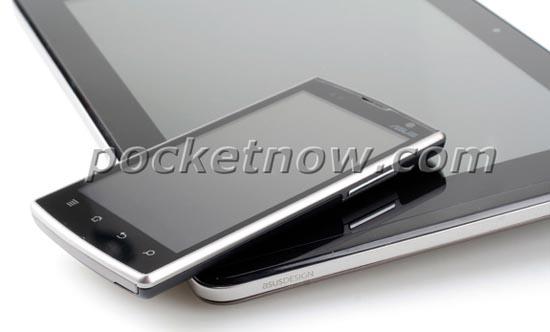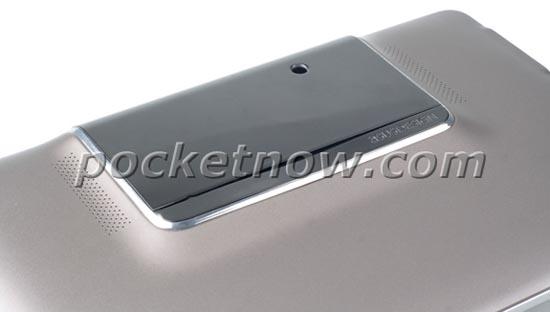
Just over a month ago, ASUS released their highly anticipated Android tablet in the United States, only for it to sell out across the net in a matter of minutes. Rather than using the same mold for their tablet as most of the manufacturers have, ASUS decided they wanted to bridge the gap between the netbook and tablet fields and bring a unique tab to consumer hands. So far, the Transformer has been well-received. In fact, even a month later and after ramping up production of the netbook-tablet hybrid, they are still flying off the shelves and impossible to keep in stock.
Back at CES, ASUS (the company notorious for starting the netbook trend) foretold that they were willing to break from the molds and try new and potentially more functional designs with their Eee Pad line. Well, it seems ASUS is at it again. But what exactly are they up to this time?
Last Friday, techies around the web were met with a pair of teaser photos of something that will be shown off by ASUSTeK at this year's Computex conference. The two images only showed silhouettes of their upcoming mystery device ... or devices. Naturally, the teasers really didn't give anything away and only made us more curious.
Early this morning though, NotebookItalia leaked some brighter, clearer images of the pair of ASUS devices. The newer, brighter images were still oddly cropped and made it difficult to depict what exactly you were looking at. You could clearly see that there was a phone and that it was lying on top of a tablet, but nothing more. If that was the end of this though, it would hardly be anything interesting. Instead, the two devices are much more closely related than that.
Pocketnow reported on Friday that ASUS filed for a trademark for the device: Padfone. The text on one of the first leaked images reads, "Break the rules: Pad or Phone? How about both?" And just hours ago, Pocketnow released full-sized images of the unique pair. This definitely cleared up how the phone will dock into the tablet. But as far as how that will change the user's interaction, well, that is still a mystery.

If I were to guess, I would say the tablet acts similarly to the Motorola Laptop Dock for the Atrix. The tablet probably consists of no internal memory (not out of the question though) or processor of its own, but instead a battery and 10.1-inch touchscreen display. The phone docks into the back of the tablet and likely charges off of the tab's battery while you use the larger display to browse the Internet, watch movies, play games, etc. The tab also utilizes the phone's speakers and camera as evidenced by the hole and speaker grills surrounding the area where the phone will dock.
This design is certainly unique and poses quite a few advantages over the average tablet: it will extend the battery life of your phone and will provide a wireless broadband connection on a tablet without adding an extra charge to your monthly bill. Also, by taking advantage of existing parts (the phone's camera and speaker), the price of the dock means you could have yourself a tablet for relatively cheap.
Despite the obvious advantages, I can also see the Padfone being a hit or miss as the design has some gaping disadvantages, too. For example, the tablet would not be standalone. If you decide to switch phones, the tablet will then be useless, unless you lug around an inactive phone everyday. And if the tablet runs off of the phone portion, then the tablet would not be running Honeycomb and thus applications would not be tablet-optimized. Then again, if Ice Cream Sandwich is released prior to this tablet hitting shelves, there is nothing to worry about on that end.
Pocketnow seems to think that since ASUS went with Padfone rather than Fonepad, that the device is more tablet-oriented than phone-oriented. Personally, I disagree due to the phone docking into the tablet. The "fone" portion would obviously have to be the standalone component.
For all we know though, this could be much more simple than that; both devices could be standalone. Just based on ASUSTeK's reputation, I highly doubt they would launch a product with such serious disadvantages or without a strong target market. Either way, I'll be keeping my eye on this pair of devices at Computex. And I'll definitely be keeping my eye on ASUS in the coming months; they're on fire lately with some of the hottest gadgets and most standout ideas.
What do you guys and gals think? How do these devices work together? Would you consider a tablet-phone combination device? Or is it another pointless commodity?